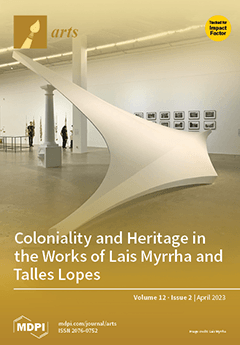The collective ritual of building one-day votive churches (
obydennye khramy) was practiced in the European north of Russia between the late 14th and 17th centuries. The product of a syncretism between Orthodox Christianity and native folklore, the ritual’s purpose was to
[...] Read more.
The collective ritual of building one-day votive churches (
obydennye khramy) was practiced in the European north of Russia between the late 14th and 17th centuries. The product of a syncretism between Orthodox Christianity and native folklore, the ritual’s purpose was to deliver the community from epidemic disease. One-day churches were built of freshly cut logs, on virgin ground, in a prominent place, such as a town square or crossroads. According to local belief, votive objects made from natural materials were simultaneously temporary and eternal; this paper interrogates how one-day churches fit this model.
Obydennye khramy were ephemeral structurally, processually, and circumstantially. These were simple, rudimentary votive structures, not built to last nor substitute established churches. By condensing into a single day all of the traditional steps of church-building, the ritual prevented the church from growing old before completion, ensuring its purity through its newness. Built under threat of pestilence,
obydennye khramy had the function of realigning the progression of time, putting an end to the period of disease, and thereby allowing humans to fleetingly triumph over natural forces.
Obydennye khramy were enduring as objects of intercession, as governance instruments, and in their subsequent representations in the written word and urban topography. Votive churches were spatial icons, mediating between humans and the cosmos and returning to nature as they decayed. The ritual itself, led by religious and secular authorities, performatively reinforced social hierarchies.
Obydennye khramy were immortalised in chronicle narratives and occasionally replaced with stone churches, some of which survive today.
Full article




